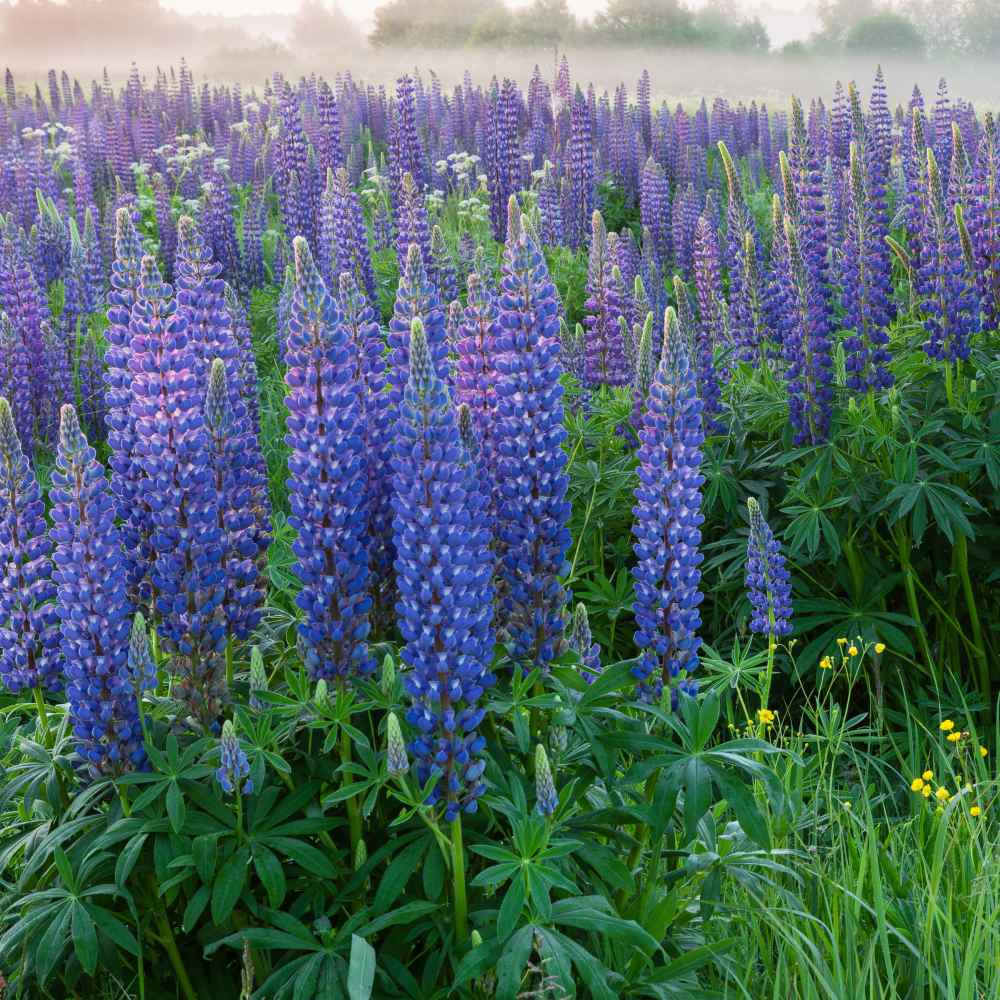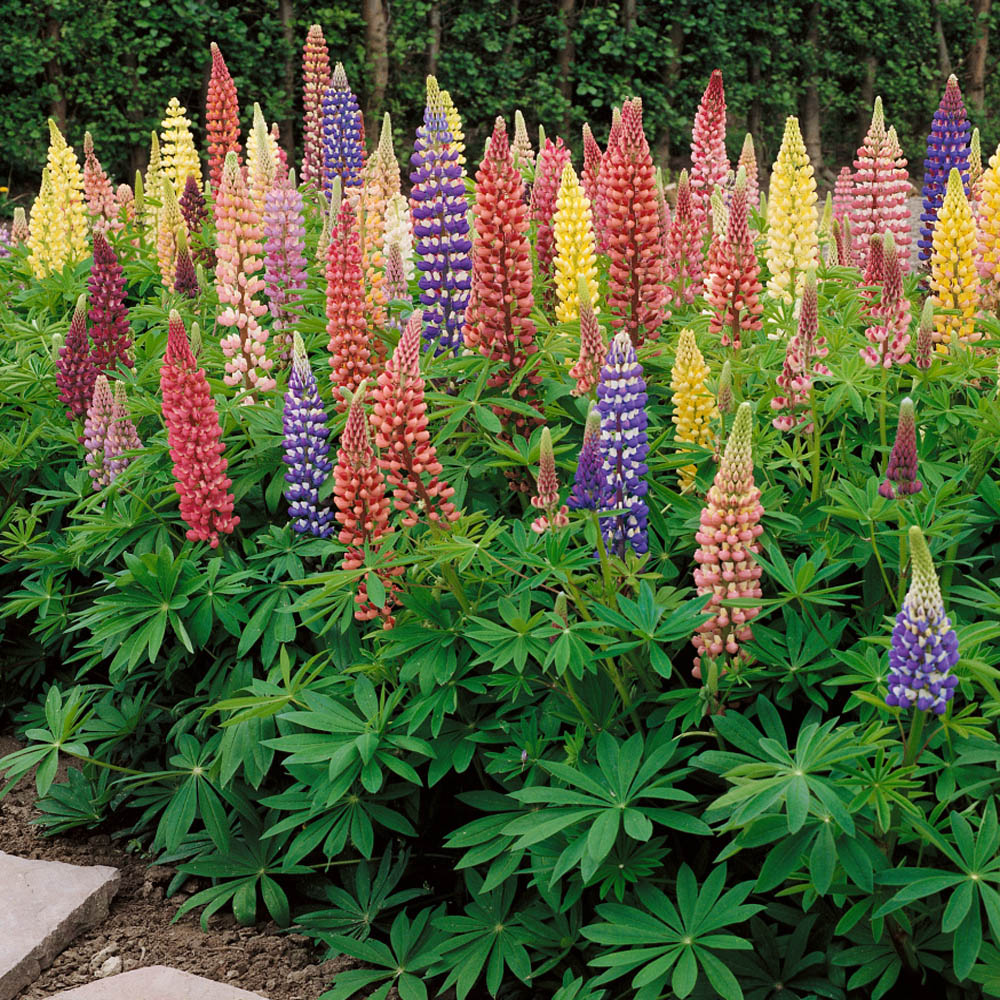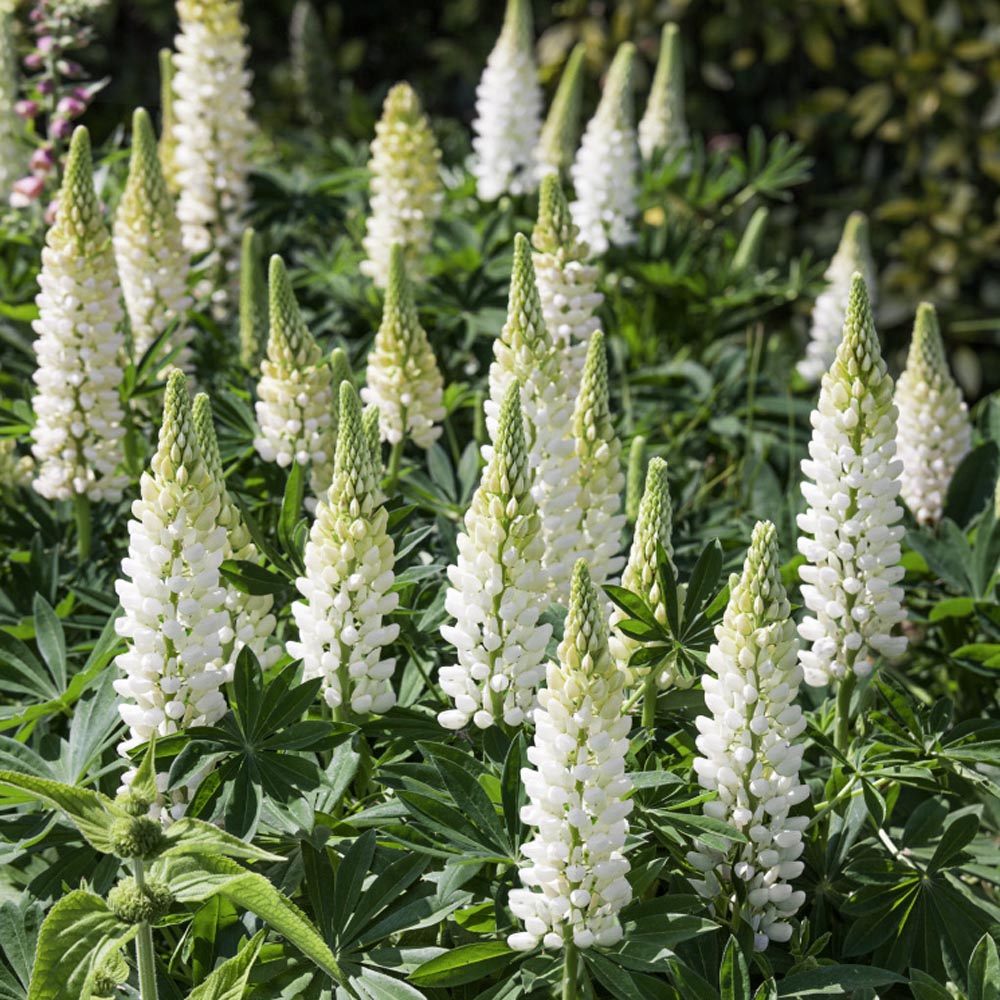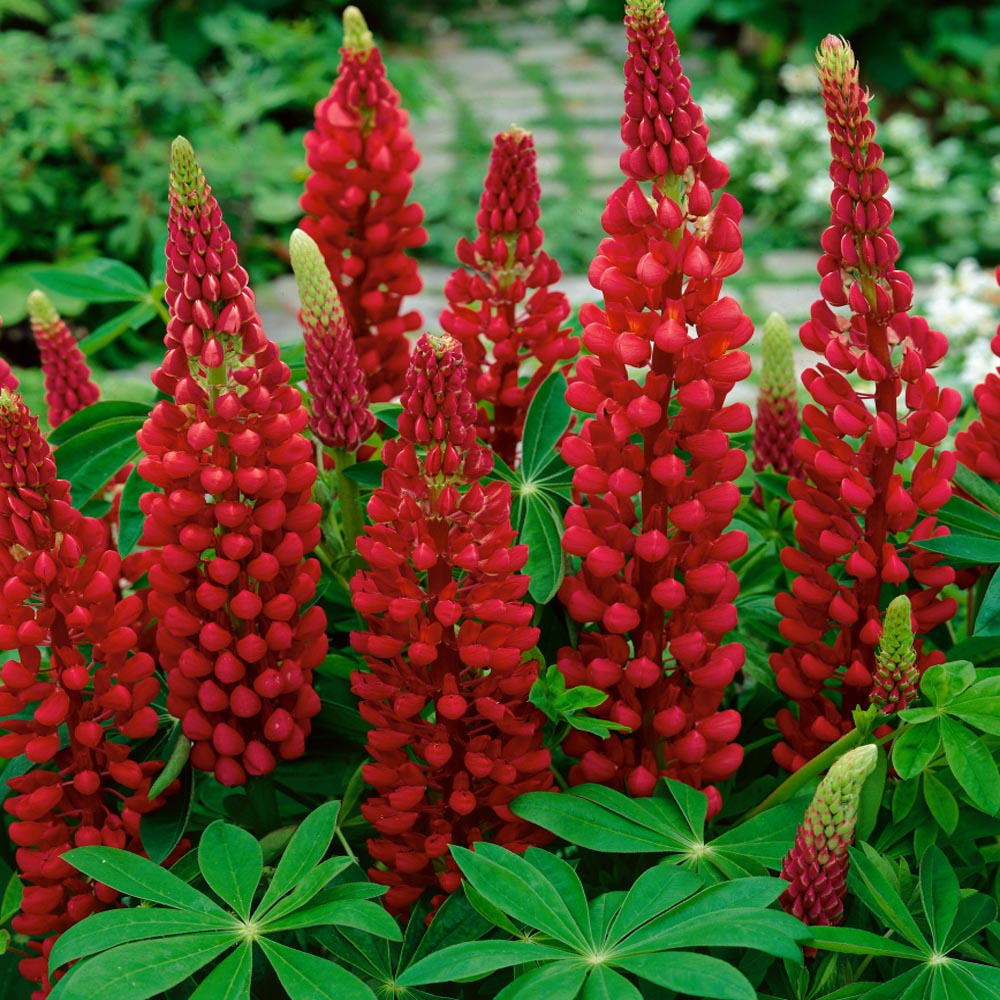
Lupine Planting and Care Guide
Quick Facts About Lupine
Lupines provide bold colors for the garden, and they pair nicely with old-fashioned favorites to make a cottage garden come alive. Lupines are deer, heat, and drought resistant and quickly take root, and they are a legume, so they add nitrogen to the garden soil. Their beautiful, showy blooms attract bees, butterflies, and hummingbirds making them well-suited to wild-life gardens. Lupines will take a full year to give a colorful display when grown from seeds.
Planting Time
Lupine flower seeds have a hard outer coat, so prior to either planting outdoors or indoors, soak the seeds for 24 - 48 hours or lay the seeds between two sheets of sand paper and roughen them. These methods help the seed to germinate faster. After a seed treatment, start the seeds outdoors in the early spring (in mild climates, seeds can be planted in the fall) or indoors 6 - 8 weeks prior to the end of frost season.

Planting Location
Lupine plants prefer full sun and sandy, well-draining soil. Lupines form a tap root, so transplanting or dividing is not advised.
How to Plant Lupines
- After the seed treatment, start the seeds in peat pots
- The Lupine seeds should be covered about 1/8 inch with soil
- Keep the soil moist and warm for germination
- Place the seedlings in a bright sunny window for growing
- Once the seedlings have true leaves, harden off the plants for 7 - 10 days prior to transplanting outdoors
- Transplant out with the entire peat pot so that the tap root is not disturbed and space about 18 - 20 inches apart
- Or, in the early spring once the soil can be worked, weed and work the soil to a depth of 8 inches
- Add compost to the soil to improve drainage
- Firm the soil down and plant Lupine seeds, covering them with soil
- Keep the area moist and thin the seedlings to about 18 inches apart

Care And Maintenance
- Water the young Lupine plants regularly to help establish their roots
- Once established, Lupines tolerate drought and high heat conditions
- A mulch around the base of the plant will help suppress weeds and hold in moisture
- In windy areas, some staking will help the plants continue to grow straight
- Deadhead the spent blooms to encourage more blooming later in the summer




































